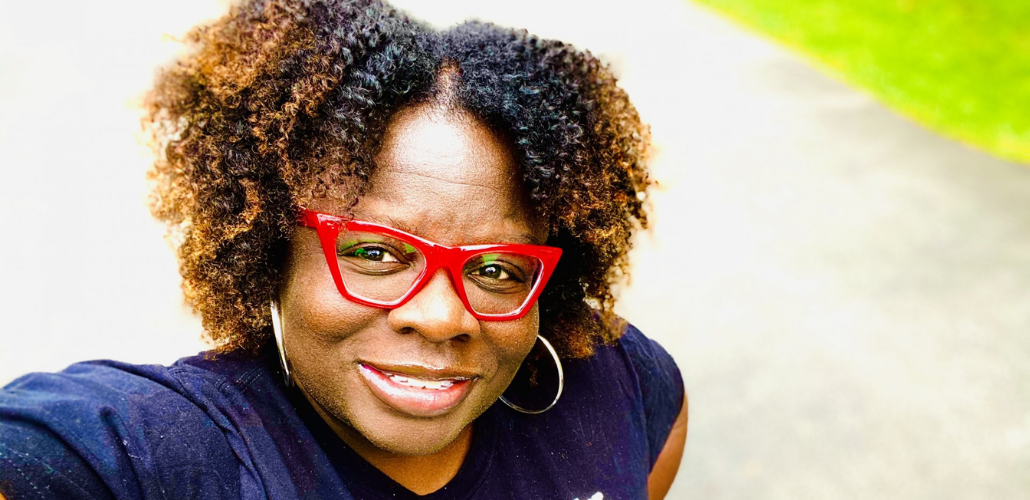Draw the Line in Permanent Marker: Three Organizing Principles

Petal Robertson is the president of the Montclair Education Association in New Jersey. Photo: NEA
I often reflect upon how our local education association in the small town of Montclair, New Jersey, managed to garner the attention of national news during the Covid school reopening debate.
It’s quite simple, really—we organized. Organizing is a mindset, one that follows three principles:
1. Teach people how to treat you.
See every situation as more than just a moment. How you decide to deal with each incident tells everyone around you what will and won’t be tolerated.
This is why everyone must know their worth and their boundaries. The principle is simple: all workers are worthy of respect and equitable treatment.
In short, decide what your line is—and draw it with a permanent marker.
At the start of the reopening discussions, our superintendent made the decision not to collaborate with our association. In October, they ordered a return to in-person instruction for our Applied Behavior Analysis staff members (educators who work with autistic students), a group of about 30 people.
But they refused to provide the ABA staff with any necessary information regarding the educational plan, proof of building safety, or protective gear. This is when we had to pull out the Sharpie.
If we allowed the district to treat our ABA staff with disregard, we knew that the rest of our association would meet the same fate. Those 30 members were tasked with teaching a district how their entire association would be treated.
On the eve of what was supposed to the ABA staff’s return to in-person instruction, they voted to stand in solidarity and not enter the buildings. This was the beginning of the largest movement in our union’s history.
2. Don’t always start a fight, but always finish one.
Boxers don’t walk around punching people just because they’re strong. But I’m sure if you punched a boxer, you would be in for a fight.
There’s a false narrative that blames every conflict on a combative union. More often than not, the reality is that management started it. Labor organizations are designed to protect members from exploitation. If you hit the union first, you’d better be ready for a fight.
By December, district leaders were refusing to meet with our association’s leaders and members to discuss any aspect of reopening. Instead, they began to stonewall us.

SUPPORT LABOR NOTES
BECOME A MONTHLY DONOR
Give $10 a month or more and get our "Fight the Boss, Build the Union" T-shirt.
The district, along with anti-labor community members, smeared and misrepresented the union and our intentions. They painted us as troublemakers and declared that our concerns were fabricated.
Ordinarily we are a pretty private association; we keep our public correspondence largely about community events. But the district had picked this fight.
We organized a communications campaign where countless members read the documentation of the district’s failures. We launched a social media and press barrage of facts demonstrating the district’s contradictory information regarding reopening. Soon, the district ceased its public misrepresentations.
3. If you haven’t won then you’re not done.
This is the hardest of all of the principles. It takes a great amount of planning and perseverance. Forget having a Plan A and a Plan B; when taking on a job action, unions need to have Plans A to Z.
We have to speak life into our members, so they find the strength to continue when the obstacles seem insurmountable.
In January, our district mandated the return to in-person instruction. Yet despite our many efforts, the district refused to provide our union with the necessary documentation to prove building safety.
We tried signing petitions, sending mass emails, testifying at board of education meetings, and so much more—and the district ignored it all. They held onto their return date, in fact demanding that the teaching staff report a week in advance of students.
It was discouraging, but we were not done. As an association, we voted to stand in solidarity for safety and to refuse to enter any district buildings.
We thought this standoff would last a day or two, and surely the district would want to resolve it. We were wrong. One Tuesday, in the middle of the day, we all got notice that our Superintendent had decided to file a lawsuit against our union.
But we weren’t done; we didn’t back down. We realized that the finish line would be wherever we drew it. The power was ours, as long as we didn’t let anything scare us or deter us.
Our court proceedings are finished now, and we emerged the victors. The settlement provided us with everything we wanted from the district, including a mandate to meet regularly with our association on a collaborative reopening process. Educators will be returning to safe buildings this month and will even have the benefit of being vaccinated before they enter. That is the power of organizing.
Petal Robertson is the president of the Montclair Education Association.




